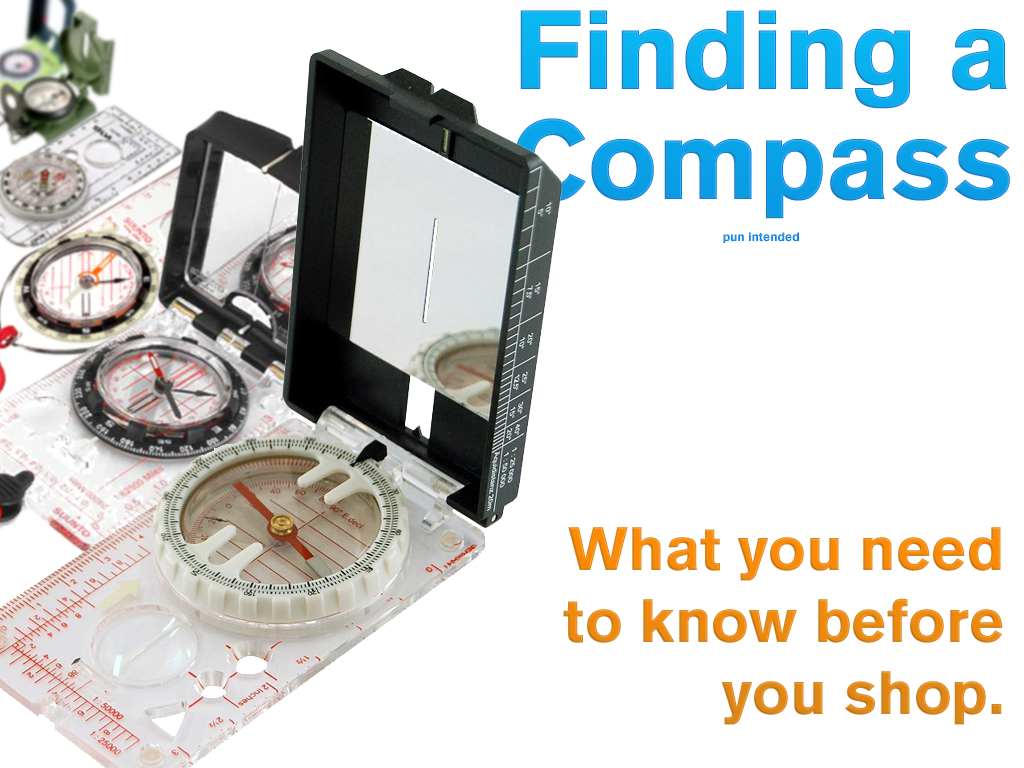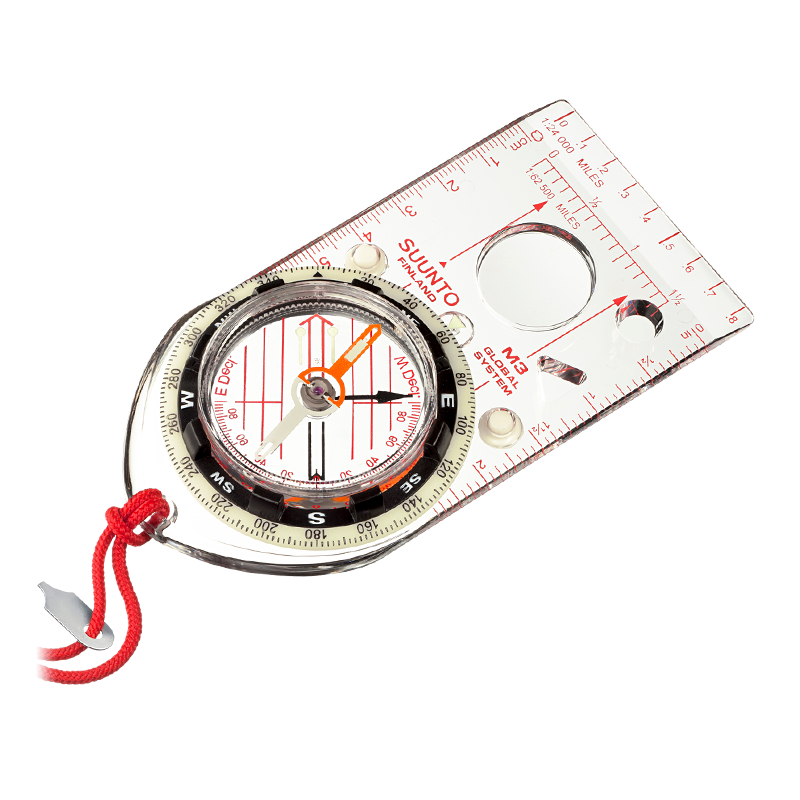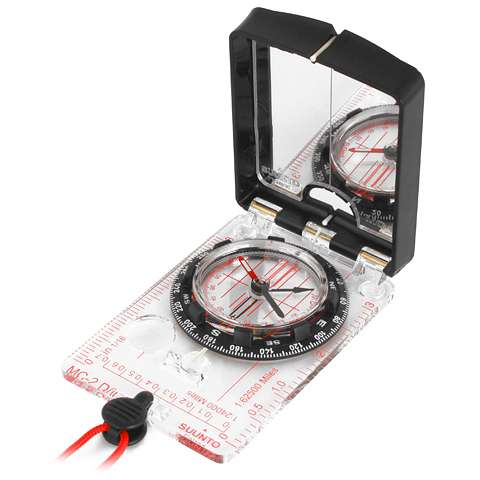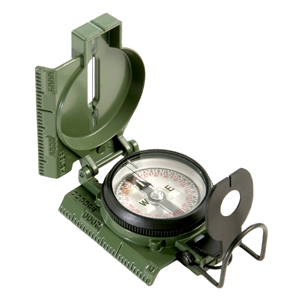
Compasses are the foundation of any outdoorsman’s navigation skills. GPS, digital mapping, and electronics are all very useful supplemental tools, but a quality compass will always be a mandatory piece of equipment when traveling off the grid. So, you want to get a new high-quality compass, but you don’t know where to start. Who can blame you? There are simple compasses that spin a needle around and point to north reliably, and then there are compasses that have mirrors, clinometers, grids, and global needles. What does all this mean, and more importantly, is it relevant? Let’s find out.
Before you can go out compass shopping, you should have your intended use in mind. Here are some points of interest that you should have worked out:
- Primary use: Primary navigation, backup navigation, or basic orienteering?
- Primary navigation – Use a sighting compass of some sort, with a clear baseplate, in conjunction with a map.
- Backup navigation – Use a baseplate compass, preferably in conjunction with a map.
- Basic orienteering – Just trying to find north or a rough heading? A small pocket compass without any bells or whistles will do.
- Environment: Where it will be used, and in what conditions. What hemisphere, time of day, and weather?
After those basics are covered, you can start looking at your options. You are going to run into a lot of terms and options. Let’s cover those:
- Baseplate Compass – These compasses generally have a clear base so that they can be used with a map more efficiently.

- Sighting Compass – This compass has a pivoting lid that has a reflective plate inside. When the lid is angled at 45 degrees to the compass’ capsule, you can hold it in front of you but still see the compass readings through the reflection. This allows you to hold the compass up, point it at an object or landmark that you want to travel towards, and get your bearing with the landmark in view.

- Lensatic Compass, Prismatic Compass, and Magnifying Windows – These are all just different ways of achieving the ability to sight your landmark and bearing simultaneously, just like a regular sighting compass.

- Clinometer – This is a free-floating object within the compass capsule that indicates an angle of incline or decline. This feature is used when the compass is held sideways, and the free-floating object settles due to gravity.
- Map Grids and Scales – Since maps are made to specific scales, having a baseplate compass with a map grid on it will only be helpful if the scales are the same. Generally, if you are using a baseplate compass with a map, it can be helpful to have a grid with the same scale. However, grids on compasses are typically less useful than dedicated map grids because they typically only indicate grid edge markers, not intersecting guidelines.
- Luminous and Tritium – These are different ways of making the compass glow so that you can use it at night. Luminous material must be ‘charged’ with direct light before it can glow, while tritium is a radioactive (safe) material that is self-luminous.
- Declination Adjustment – Unfortunately, the magnetic north pole that our compasses point to is always moving, and is rarely situated directly over the geographical north pole of Earth. The declination adjustment allows you to adjust your compass to point towards geographical north, or “true north.” This adjustment will vary based on where you are in the world. To find your current declination angle, use NOAA’s declination tool. Although you do not need a compass with declination to find true north, compasses with declination adjustment allow you to edit the compasses bezel to indicate true north so that you don’t have to do the math every time you take a reading.
Those are the most common features you will be faced with as you are window shopping. However, there are some more uncommon features out there that might be advantageous for your specific usage.
- Global Needle – A global needle has the ability to tilt up to 20 degrees on its axis. The increased range allows this compass to be used in the southern hemisphere accurately. It also allows a northern hemisphere user to hold the compass less precisely, yet still achieve an accurate reading, especially while moving.
- Rubber Feet – Rubber feet simply resist letting the compass slip around on a map, but you’d be surprised how much a small feature like this can do for you.
- Thermo-Elastic Capsule – Bubbles inside your compass capsule are bad news, and are the first sign of an imminent complete failure. Bubbles get into your capsule by temperature, abuse, and cracks in a brittle capsule. A thermo-elastic capsule is a flexible capsule that allows the fluid inside to expand and contract naturally without damaging the capsule walls.
- Floating Compasses – If you will be navigating in a maritime environment, this feature could save your compass (and even you).
- Polished Aluminum Mirror – Some sighting compasses use a traditional mirror type reflector with glass or plastic. While the clarity and reflectivity are superior, glass and plastic can break under accidental impacts and drops. A polished aluminum reflector will not be as clear as a mirror but will be much more durable.
- Magnification Lens, Marking Holes, Measurement Markings – These are all additional features that assist in using, marking, and measuring on maps.
So now you know what to look for, but what brands can you trust? I recommend checking out Silva, Suunto, K&R, Cammenga, and Brunton to get you started. Those manufacturers will all have a compass that can meet your needs.
